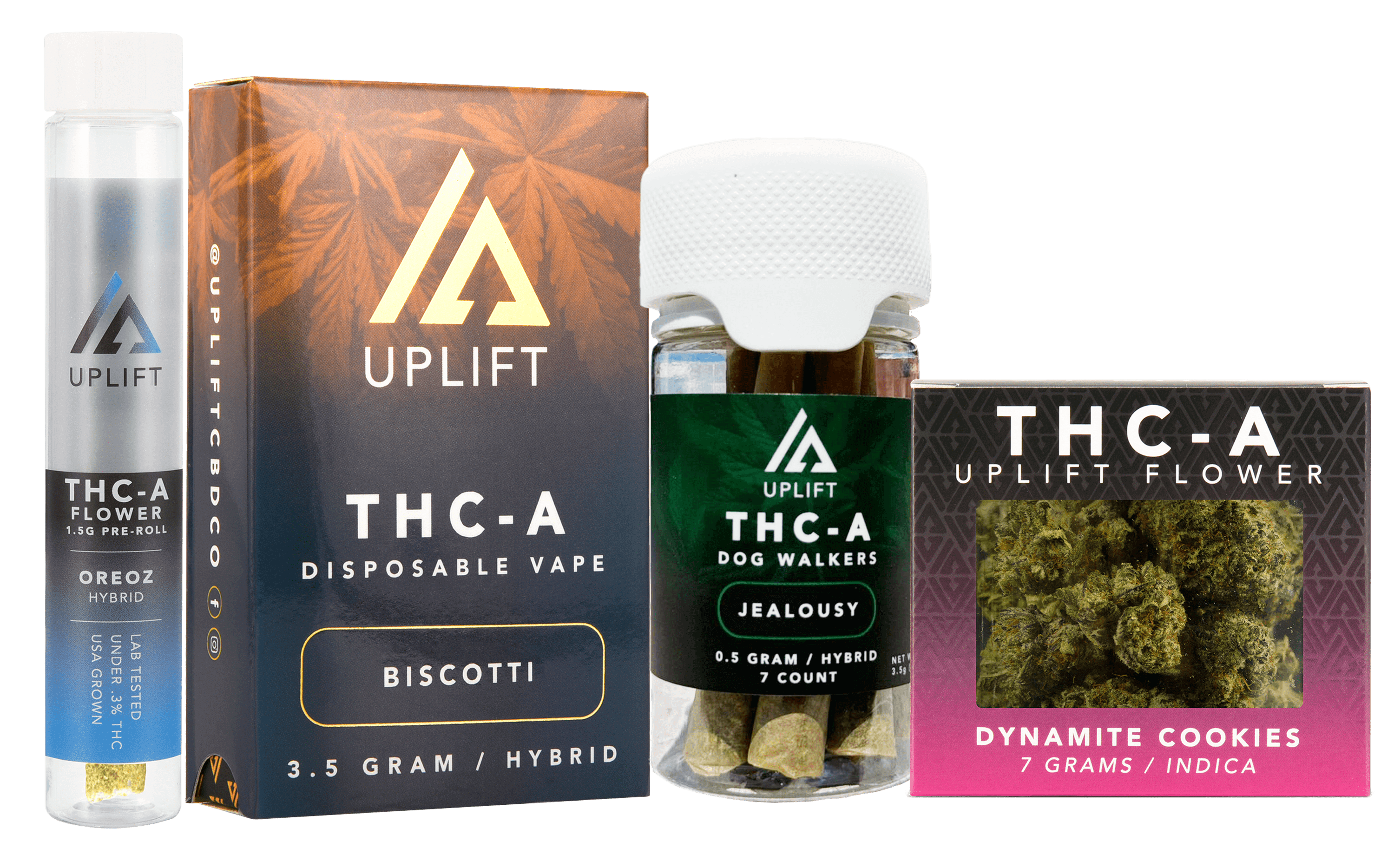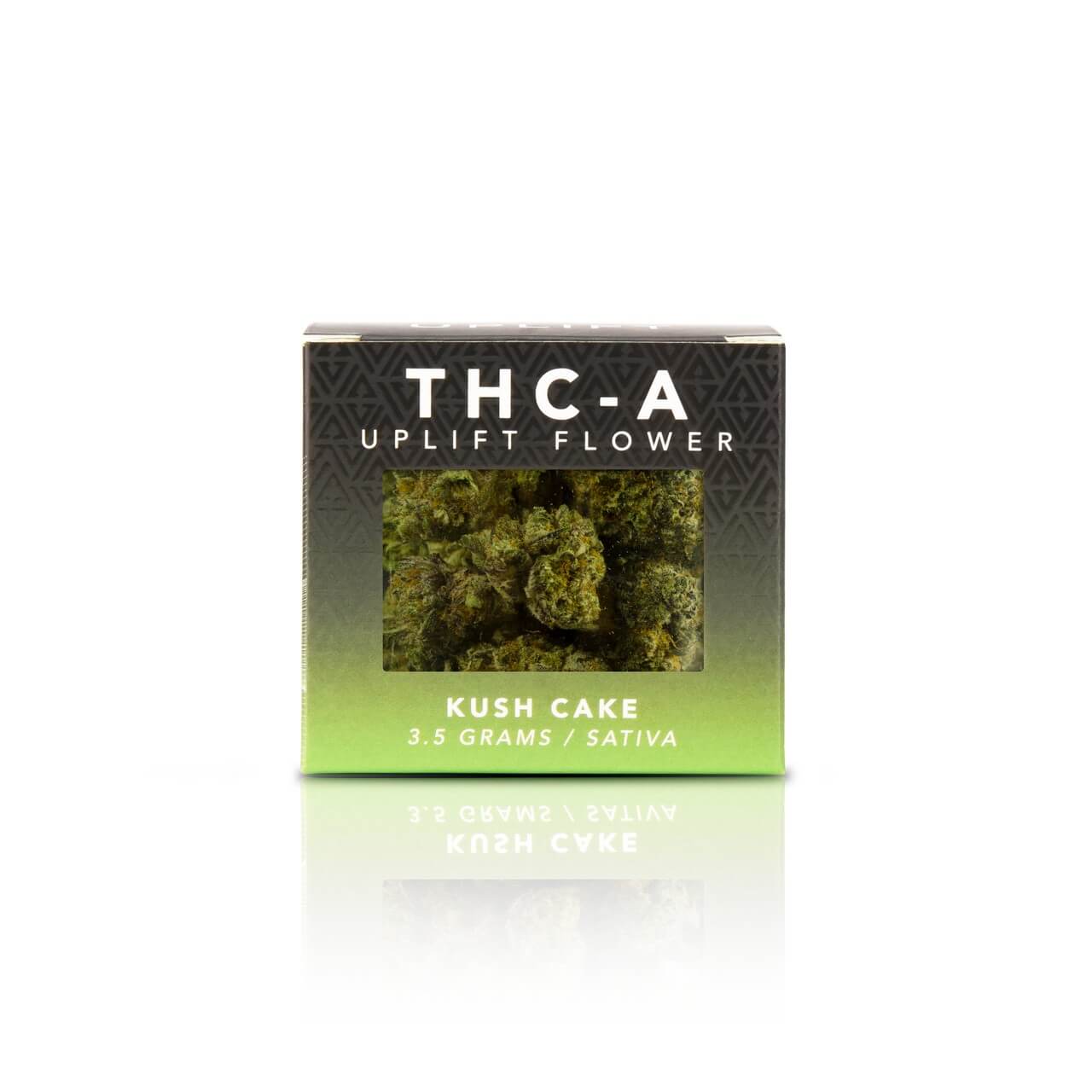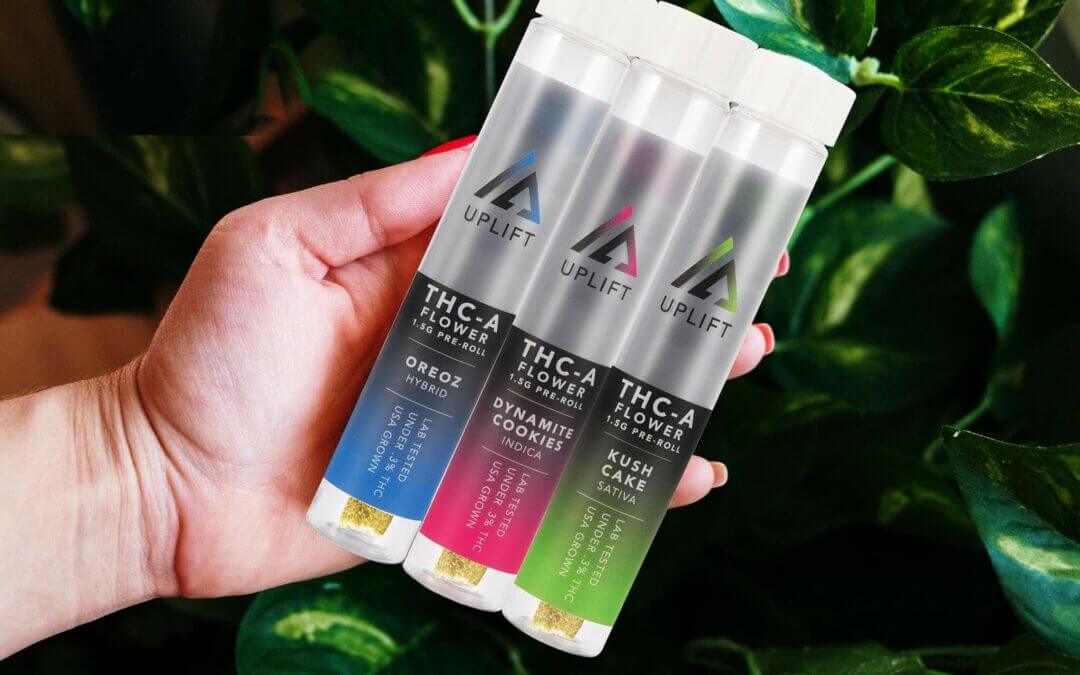Understanding the difference between THC (tetrahydrocannabinol) and THCA (tetrahydrocannabinolic acid) is crucial for anyone curious about cannabis. These terms play a big role in how cannabis affects us, and why different types of the plant can have different effects.
THC and THCA might sound similar, but they’re quite different. Let’s break it down.
What Is THC?
THC, also known as tetrahydrocannabinol, is the main substance in cannabis that makes you feel “high” when you use marijuana. It affects your mood, perception, and how you sense pain by interacting with your brain and nervous system. That’s why people use cannabis for both fun and medical reasons.
As we learn more about THC and its impact on the body and mind, let’s look at how it’s different from THCA – the non-psychoactive form of THC found in raw cannabis products.
How Does THC Interact with the Human Body?
THC, the active substance in cannabis, works in your body by connecting with cannabinoid receptors. These receptors are part of the endocannabinoid system, which helps regulate various bodily functions.
When THC links up with these receptors, it can influence memory, pleasure, movement, thinking, concentration, coordination, and how you perceive time and senses. This connection is what causes the “high” sensation when you consume marijuana with THC.
Aside from its effects on the brain’s receptors (mainly CB1), THC also impacts other body systems like pain perception and immune function. It does this by binding with cannabinoid receptors throughout the body, particularly CB2.

SHOP NOW!
What is THCA?
THCA stands for tetrahydrocannabinolic acid, a substance found in raw and unheated cannabis plants. It’s like the starting point for THC, which is the stuff that can make you feel high. Before it gets warm or old, THCA doesn’t have those effects; it won’t make your mind feel different. Scientists are really interested in THCA because they think it might help people in ways we don’t fully know yet.
Your body has this cool system called the endocannabinoid system. THCA interacts with this system when you eat raw cannabis leaves or use juices from these plants. Even though it won’t change how you feel in your head, THCA might still do helpful things inside your body, just like other cannabinoids from the same plant family.
How Does THCA Interact with the Human Body?
THCA jumps into your system like a swimmer ready to race. When you eat or drink it, it goes into your bloodstream. From there, THCA moves all over your body and meets up with cannabinoid receptors.
These receptors are part of something called the endocannabinoid system. Think of this system as a big network that helps keep your body balanced.
THCA doesn’t mess with your mind like THC does because it’s not psychoactive. It won’t make you feel high, but it still plays an important role in how your body feels and functions. Scientists are really curious about how THCA might help with things like inflammation and protecting nerves because those could be big deals for health in the future!
The Conversion of THCA Into THC
As THCA moves through your body, it can change into a different form. When it gets hot, THCA turns into THC, the stuff in cannabis that makes you feel high. This change is called decarboxylation, kind of like how dough turns into cookies with heat.
When you smoke or vaporize cannabis, the fire or heat removes a special part of the THCA molecule, and that’s how THC is made. It’s like using an oven to bake cookies. If you’ve ever made edibles from cannabis, heating up the plant material does the same thing – it turns the raw THCA into THC.
The Difference Between THCA vs THC
THCA and THC are both substances in the cannabis plant, but they have different chemical structures and effects on the body. THCA doesn’t cause a high, and it needs to change into THC to have psychoactive effects. THC directly attaches to cannabinoid receptors in the brain, creating a high sensation.
Knowing these distinctions is important for people who use cannabis so they can make informed decisions about how they consume it.
Chemical Structure and Properties
THCA and THC are compounds found in cannabis, but they have some clear differences. THCA, which stands for tetrahydrocannabinolic acid, is the acidic form of THC before it’s heated. Unlike THC, it doesn’t cause intoxication.
On the flip side, THC (tetrahydrocannabinol) is psychoactive and responsible for the “high.” When THCA is heated, it converts into THC. This happens because THCA has a carboxyl group attached to its molecule, making it chemically distinct from THC.
The contrast between these two compounds affects how they work in the body. While THCA doesn’t make you high because it’s not psychoactive, THC does have psychoactive effects when you consume it.
Psychoactive Effects
THC is the compound in cannabis that can make you feel high, changing your mood and perception. When THC enters your body, it attaches to special receptors in your brain and nervous system, affecting how you think, feel, and behave.
On the other hand, THCA doesn’t have psychoactive effects because it doesn’t bind as easily to these receptors. The main difference lies in the chemical structure and how it interacts with your body’s systems.
When shopping for cannabis products online, understanding the difference between THCA and THC can help you make informed decisions about what type of experience you’re seeking when consuming cannabis.
Legal Status
After exploring the psychoactive effects of THCA and THC, it’s important to understand the legal status surrounding these compounds. In many areas, THC is regulated because of its psychoactive properties and is classified as a controlled substance.
However, laws concerning THCA differ because it doesn’t cause intoxication in its raw form. It’s important to know the legal framework in your area regarding both THCA and THC before buying or using any cannabis products.
Understanding the legality will help you make informed decisions about consumption and ensure compliance with local regulations.
Potential Benefits & Effects of THCA and THC
Discover the potential benefits and effects of THCA and THC, including their anti-inflammatory and neuroprotective properties, as well as their medical uses. To explore how these compounds can positively impact your health, keep reading!
What Does Research Say About the Suggested Benefits of THCA?
Research suggests that THCA may offer potential benefits such as anti-inflammatory and neuroprotective properties. These properties indicate the possibility of THCA being used for managing pain and inflammation, and potentially even in the treatment of neurodegenerative conditions.
While more research is needed to fully understand these benefits, initial studies show promise in utilizing THCA for its therapeutic effects without causing the psychoactive “high” associated with THC consumption. This presents an exciting avenue for exploring the medicinal uses of cannabis beyond just its recreational aspects.
What Does Research Say About the Suggested Benefits of THC?
Research suggests that THC, the psychoactive compound in cannabis, may offer several potential benefits. These benefits include pain relief, appetite stimulation, and reducing nausea.
Studies also indicate that THC may have anti-inflammatory properties and could potentially help with conditions like multiple sclerosis and post-traumatic stress disorder (PTSD). Additionally, some research has shown that THC might be effective in managing sleep disorders such as insomnia.
It’s important to note that individual responses to THC can vary, so it’s essential to start with low dosages. Furthermore, studies have explored the potential of THC in alleviating symptoms related to chemotherapy side effects like nausea and vomiting. Some evidence also points towards THC having neuroprotective properties and being beneficial for certain neurological conditions.
How to Consume THC and THCA
Inhalation, edibles, topicals, and sublingual methods are popular ways to consume both THC and THCA. Each method offers different onset times and effects, so buckle up for a detailed exploration of the best consumption practices!
Inhalation
Inhaling cannabis is a popular way to experience the effects of THCA and THC. When you inhale, the heat from smoking or vaporizing converts THCA into THC, allowing it to enter your bloodstream and reach your endocannabinoid system quickly. This method often provides rapid relief for symptoms like pain or nausea.
It’s important to note that smoking can have negative effects on your respiratory system, so if you choose this method, consider using a vaporizer for a potentially less harmful option.
Moving on to edibles, let’s explore how consuming cannabis in this form can affect your body and mind.
Edibles
Edibles offer a discreet and convenient way to consume cannabis. When you eat cannabis-infused edibles, your body processes the THC differently compared to when you inhale it. It can take longer for the effects to kick in with edibles, but they also tend to last much longer.
THCA and THC percentages are important to consider when choosing edibles as they affect the potency and duration of the experience. Always start with a low dosage when trying new edibles, since their impact can vary from person to person.
Remember that consuming too much THC through edibles can lead to an uncomfortable experience due to its stronger and longer-lasting effects on the body. Also, be mindful of any laws regulating the purchase and consumption of THC-containing products in your area before purchasing edibles online.
Topicals
Topicals, like creams and lotions, are a popular way to use cannabis for localized relief. They can be applied directly to the skin over sore muscles or achy joints. The cannabinoids in topicals interact with endocannabinoid receptors in the skin, offering potential relief without causing a high.
Many users appreciate that topicals allow them to target specific areas of discomfort without affecting their mental state. When considering topicals, it’s important to note that they don’t enter the bloodstream in the same way as other forms of cannabis consumption. Instead, they work locally in the area where you apply them.
Sublingual
Sublingual consumption involves placing cannabis products under your tongue, allowing them to be absorbed directly into the bloodstream through the mucous membranes. This method bypasses the digestive system, leading to quicker effects compared to edibles.
With sublingual consumption, you can experience faster relief from symptoms without waiting for digestion. It’s a discreet and efficient way to consume cannabinoids like THCA or THC, offering a convenient option for those seeking fast-acting effects in a controlled manner.
Remember that when using cannabis sublingually, it’s important to start with low doses and gradually increase as needed due to the rapid absorption into the bloodstream. By choosing this consumption method, you may experience quicker onset and more predictable effects of THCA or THC without needing to inhale smoke or wait for the edibles’ digestion process.
Conclusion
In conclusion, THCA is the non-psychoactive form of THC found in raw cannabis. When heated, THCA converts into THC, which is psychoactive. Both compounds work within your body’s endocannabinoid system but have different effects due to their chemical structures and properties.
Understanding these differences can guide you in choosing the right cannabis products based on your needs and preferences. Stay informed about the potential benefits and legal status of both THCA and THC and consider exploring the benefits of Uplift CBD products as part of your wellness routine.


